| Date | Text | |
|---|---|---|
30 Nov 1916

D'Arcy Wentworth Thompson |
D'Arcy Wentworth Thompson (biology) D'Arcy Wentworth Thompson's On Growth and Form is published. |
|
30 Nov 1916

Paul Ehrenfest |
Paul Ehrenfest (mathematics) Paul Ehrenfest gives a conditional principle for a three-dimensional space. |
|
30 Nov 1916

Shinobu Ishihara |
Shinobu Ishihara (medicine) Shinobu Ishihara publishes his color perception test. |
|
30 Nov 1916

Julius Wagner-Jauregg |
Julius Wagner-Jauregg (medicine) Julius Wagner-Jauregg discovers malarial pyrotherapy for general paresis of the insane. |
|
30 Nov 1916
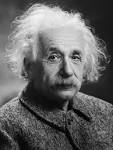
Albert Einstein |
Albert Einstein (physics) Albert Einstein introduces the idea of stimulated radiation emission. |
|
30 Nov 1916
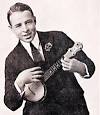
Kelvin Keech |
Kelvin Keech (technology) Alvin D. and Kelvin Keech introduce the "banjulele-banjo", an early form of the banjolele. |
|
19 Jan 1917

Graham Higman |
birth Graham Higman Graham Higman (died 2008), English mathematician. |
|
25 Jan 1917

Ilya Prigogine |
birth Ilya Prigogine Ilya Prigogine (died 2003), Russian-born winner of the Nobel Prize in Chemistry. |
|
11 Feb 1917

Laura Forster |
death Laura Forster Laura Forster (born 1858), Australian physician, died on war service. |
|
14 Feb 1917

Herbert A. Hauptman |
birth Herbert A. Hauptman Herbert A. Hauptman (died 2011), American mathematical biophysicist, winner of the Nobel Prize in Chemistry. |
|
23 Feb 1917

Jean-Gaston Darboux |
death Jean-Gaston Darboux Died 23 Feb 1917 at age 74 (born 14 Aug 1842). French mathematician whose work on partial differential equations introduced a new method of integration (the Darboux integral) and contributed to infinitesimal geometry. He wrote a paper in 1870 on differential equations of the second order in which he presented the Darboux integral. In 1873, Darboux wrote a paper on cyclides and between 1887-96 he produced four volumes on infinitesimal geometry, including a discussion of one surface rolling on another surface. In particular he studied the geometrical configuration generated by points and lines which are fixed on the rolling surface. He also studied the problem of finding the shortest path between two points on a surface. |
|
08 Mar 1917

Ferdinand von Zeppelin |
death Ferdinand von Zeppelin Ferdinand von Zeppelin (born 1838), founder of the Zeppelin airship company. |
|
23 Mar 1917

Howard McKern |
birth Howard McKern Howard McKern (died 2009), Australian analytical and organic chemist. |
|
24 Mar 1917

John Kendrew |
birth John Kendrew John Kendrew (died 1997), English molecular biologist, winner of the Nobel Prize in Chemistry. |
|
31 Mar 1917

Emil von Behring |
death Emil von Behring Died 31 Mar 1917 at age 63 (born 15 Mar 1854). Emil Adolf von Behring was a German bacteriologist who is considered the founder of the science of immunology. He received in 1901 the first Nobel Prize for Physiology or Medicine for his work on serum therapy, especially its application against diphtheria. In 1890, working with S. Kitasato, he discovered that immunity against tetanus and diphtheria could be produced by injecting serum from an animal that had recovered from the disease. He coined the word antitoxin for such substances. They also showed that the antitoxins thus produced by one animal could immunize another animal and that it could cure an animal actually showing symptoms of diphtheria. This great discovery was soon confirmed and successfully used by other workers. |
|
31 Mar 1917
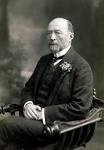
Emil Adolf von Behring |
death Emil Adolf von Behring Emil Adolf von Behring (born 1854), winner of the Nobel Prize in Physiology or Medicine in 1901. |
|
18 Apr 1917

Brian Harold Mason |
birth Brian Harold Mason Brian Harold Mason (died 2009), New Zealand born geochemist and mineralogist who was one of the pioneers in the study of meteorites. |
|
01 Jul 1917

Humphry Osmond |
birth Humphry Osmond Humphry Osmond (died 2004), English-born psychiatrist. |
|
27 Jul 1917

Emil Theodor Kocher |
death Emil Theodor Kocher Emil Theodor Kocher (born 1841), 1909 winner of the Nobel Prize in Physiology or Medicine. |
|
29 Jul 1917
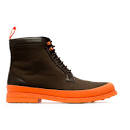
Harry Boot |
birth Harry Boot Born 29 Jul 1917; died 8 Feb 1983 at age 65. Dr Henry Albert Howard "Harry" Boot was an English physicist, who worked with John Randall developing the cavity magnetron, the microwave-generating device used in radar. This made a major contribution to winning WWII. Earlier magnetrons made in the 1920's gave low power output. By Feb 1940, advances by Randall and Boot in the design of the small-sized cavity magnetron, produced centimeter wavelengths at much higher power, which allowed radar to detect smaller objects. In turn, this more compact equipment with a smaller antenna permitted easy mobile installation of high-resolution radar in aircraft. |
|
03 Aug 1917

Ferdinand Georg Frobenius |
death Ferdinand Georg Frobenius Ferdinand Georg Frobenius (born 1849), German mathematician. |
|
13 Sep 1917

Technicolor |
Technicolor (technology) Release in the United States of the first film made in Technicolor System 1, a two-color process, The Gulf Between. |
|
30 Sep 1917

Irving B. Kahn |
birth Irving B. Kahn Born 30 Sep 1917; died 22 Jan 1994 at age 76. American inventor of the teleprompter, who headed the TelePrompTer company. In the mid 50's, Kahn designed and built what was perhaps the first remotely controlled, multi-image, rear projection system in the world for the U.S. Army's facility in Huntsville, Ala., to make persuasive presentations to visiting Congressmen. With five images (one large, 3¼ by 4 slide or film image in the center flanked smaller slides at each side) and random access it could search and select among 500 slides. TelePrompTer also made many technological contributions to the early cable TV industry. In 1961, Kahn and Hub Schlafley demonstrated Key TV, an early pay TV concept, by showing the second Patterson vs. Johansson heavyweight fight, essentially giving birth to pay-per-view. |
|
02 Oct 1917

Christian de Duve |
birth Christian de Duve Christian de Duve (died 2013), English-born Belgian biologist, winner of the Nobel Prize in Physiology or Medicine |
|
08 Oct 1917

Rodney Porter |
birth Rodney Porter Rodney Porter, English biochemist (died 1985), winner of the Nobel Prize in Physiology or Medicine. |
|
22 Nov 1917

Andrew Huxley |
birth Andrew Huxley Andrew Huxley (died 2012), English winner of the Nobel Prize in Physiology or Medicine. |
|
12 Dec 1917
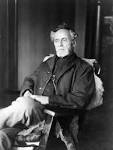
Andrew Taylor Still |
death Andrew Taylor Still Died 12 Dec 1917 at age 89 (born 6 Aug 1828). U.S. founder of osteopathy , who believed that remedies for disease are available in the correctly adjusted body, obtained through manipulative techniques and concomitant medical and surgical therapy. He followed his father as a physician, and later served as a surgeon in the Union Army during the Civil War. By the early 1870's Still criticized the misuse by doctors of drugs common to the day. Still supported a different philosophy of medicine: he advocated the use of osteopathic manipulative treatment. Still's philosophy focused on the unity of all body parts. He identified the musculoskeletal system as a key element of health. He recognized the body's ability to heal itself and stressed preventive medicine, eating properly, and keeping fit. |
|
16 Dec 1917

Arthur C. Clarke |
birth Arthur C. Clarke Arthur C. Clarke (died 2008), English-born science fiction author and inventor. |
|
17 Dec 1917

Elizabeth Garrett Anderson |
death Elizabeth Garrett Anderson Elizabeth Garrett Anderson (born 1836), English physician. |
|
22 Dec 1917
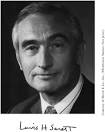
Lewis Hastings Sarett |
birth Lewis Hastings Sarett Born 22 Dec 1917; died 29 Nov 1999 at age 81. American organic chemist who prepared a synthetic version of the hormone cortisone (1944) using a complicated 36-step process. He was a research scientist (1942-48) at Merck & Co., Inc. Four years later the Mayo Clinic demonstrated the efficacy of the product against rheumatoid arthritis. Cortisone also has wide-ranging applications in the treatment of allergies as well as inflammatory and neoplastic diseases. In 1949, Sarett and several collaborators initiated an alternative synthesis commencing with raw materials derivable from coal, air, lime, and water. This led to the first route independent of naturally occurring starting materials. Sarett was the 1975 recipient of the National Medal of Science. |